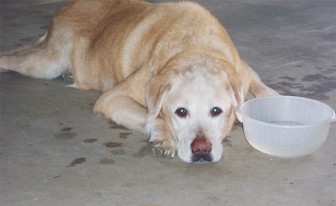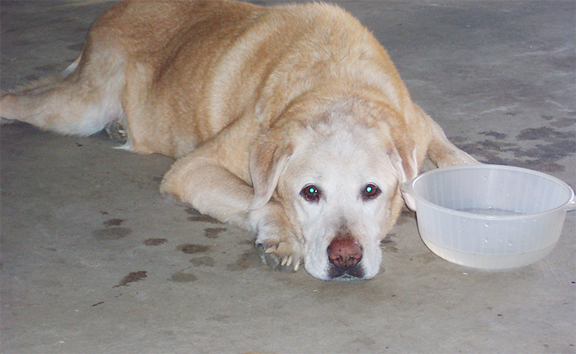Continued from last week
Disorders of the bladder
In the lower urinary tract, there are four basic problems, often interrelated. These are infections, obstructions, stones and loss of bladder control (urinary incontinence).
Bladder infection (cystitis)
Cystitis is a bacterial infection of the lining of the bladder. Infections in the genital tracts in both males and females may precede bouts of cystitis. Females with cystitis may lick at their vulva and have a discharge from the vagina. Some cases of cystitis are caused by bacteria which gain entrance to the bladder via the bloodstream or through the kidneys.

Animals suffering from cystitis usually have an interesting history. Please answer the questions posed by your vet with great honesty and detail. Physical findings may be helpful, but are not always sufficient to establish a reliable diagnosis. For that reason, your vet will often request a laboratory analysis of the urine or even a culture of urine sample.
Treatment
Cystitis must be treated promptly to prevent ascending infection and damage to the kidneys.

Obstructed bladder (urinary retention)
A dog which strains to pass its urine, or has obvious difficulty emptying its bladder is probably suffering from a blockage in the bladder outlet or urethra (the tube leading the urine from the bladder to the outside).
Some stones in the bladder or urethra are the most common causes. However, tumours, strictures and infections are at times responsible. Enlargement of the prostate gland is not a common cause of obstruction in the dog, as it is in humans.
A dog with an obstructed bladder is acutely uncomfortable or in dire distress. Males and females often assume a peculiar splay-legged stance while painfully attempting to void. Continuous straining might be confused with constipation. Pressure on the abdomen beneath the pelvis may reveal a swollen, tender bladder, which feels like a large ball in front of the pelvis (hip bones). With complete obstruction, no urine is passed at all.
A partial obstruction can be suspected when the dog begins to dribble, voids frequently, has a weak splattery stream, but is not in acute distress. A partial obstruction may, with continued irritation, terminate in a complete obstruction.
Treatment
Complete obstruction of the bladder is a medical emergency. A sterile catheter must be inserted into the bladder to provide relief. It should be done by one familiar with the technique and having the necessary equipment. Treatment then is directed at the underlying cause.
The above text has relied heavily on publications by vets, Drs Carlson and Griffin.
Please implement disease preventative measures (vaccinations, routine dewormings, monthly anti-heartworm medication, etc) and adopt-a-pet from the GSPCA’s Animal Clinic and Shelter at Robb Street and Orange Walk, if you have the wherewithal to care well for the animals. Do not stray your unwanted pets, take them to the GSPCA’s Clinic and Shelter instead. If you do not wish your pet to have puppies or kittens, you may exploit the GSPCA’s free spay and neutering programme. If you see anyone being cruel to an animal, or if you need any technical information, please get in touch with the Clinic and Shelter by calling 226-4237.






